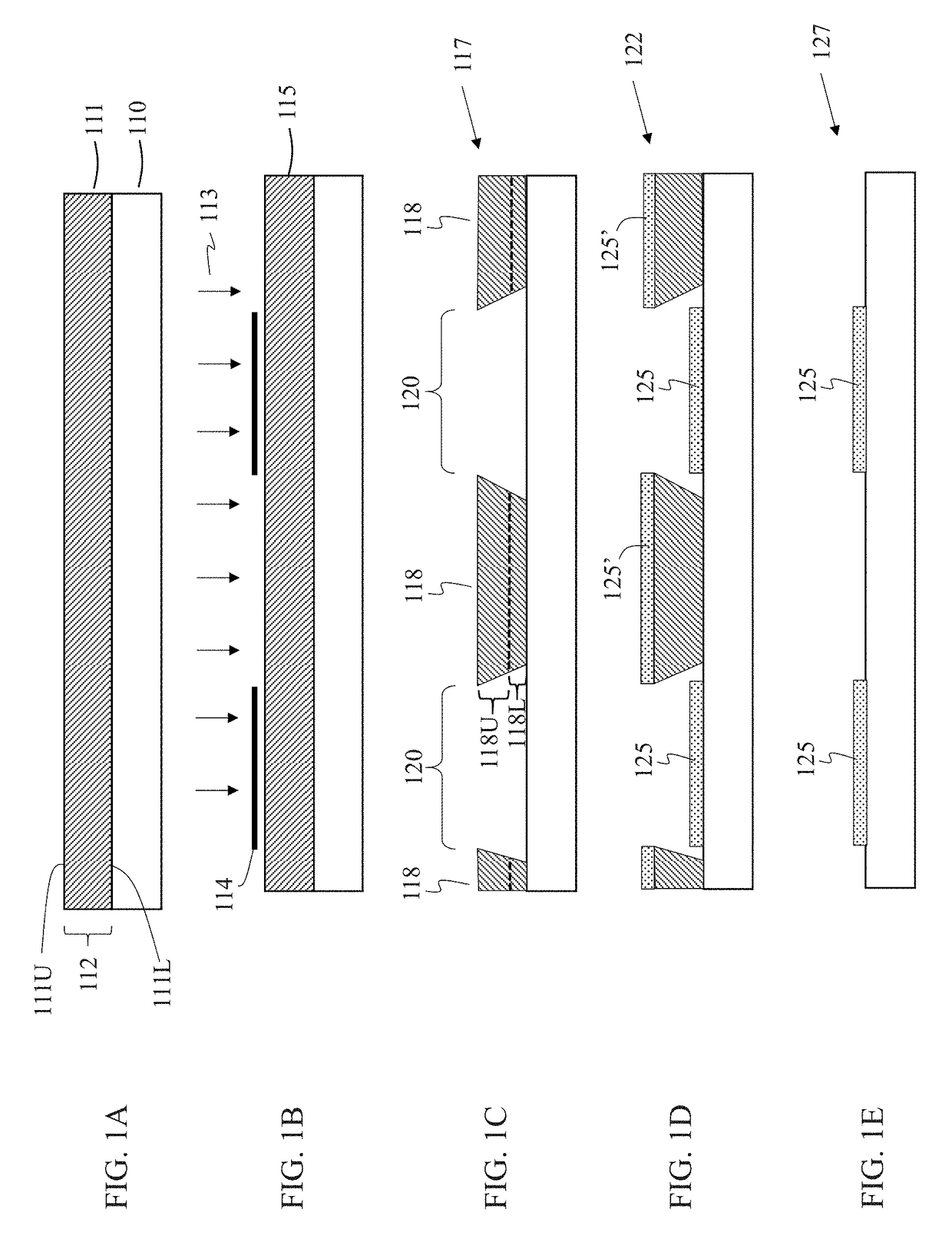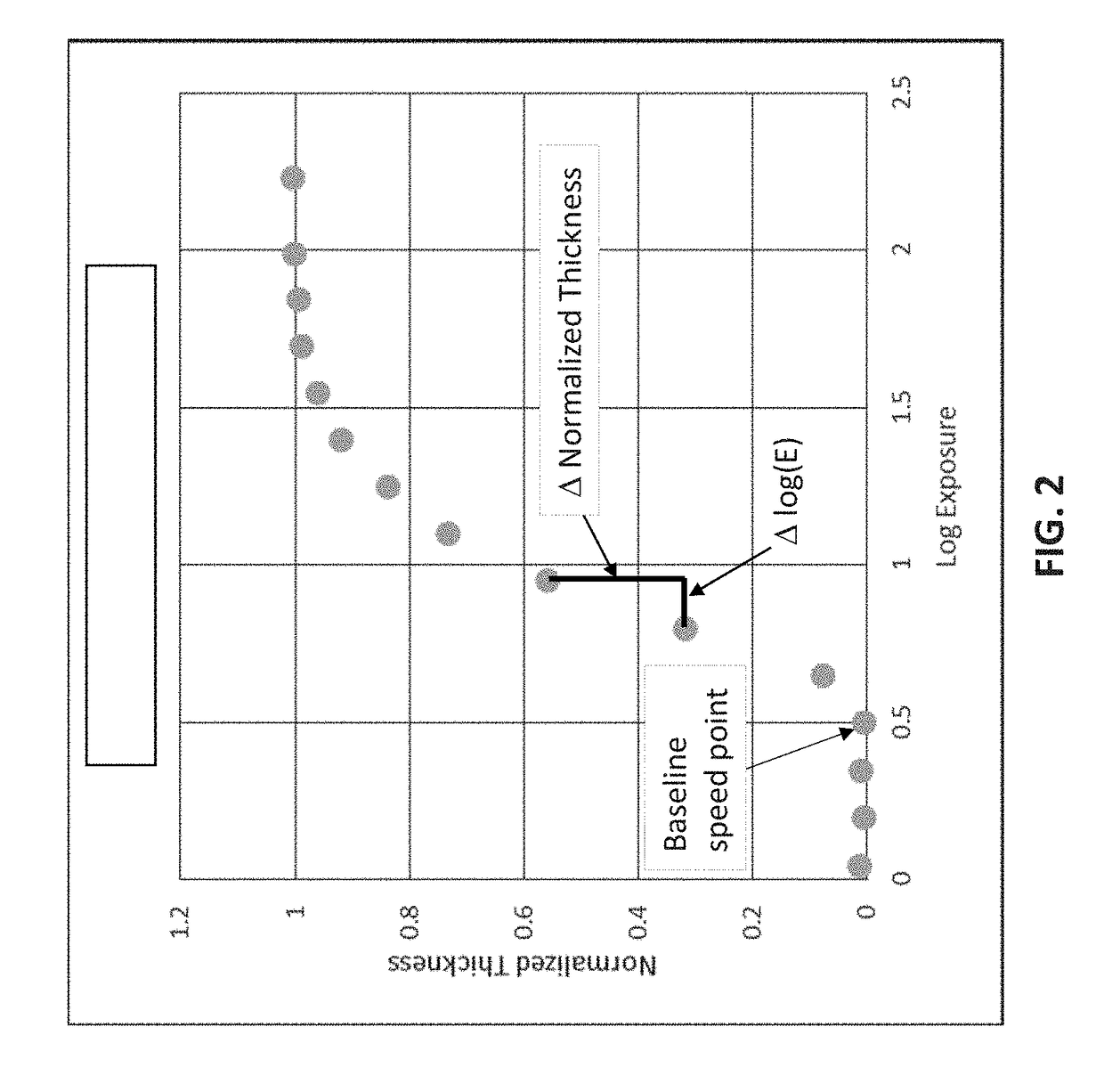Photolithographic patterning of electronic devices
a technology of electronic devices and photolithography, applied in the direction of photomechanical devices, instruments, coatings, etc., can solve the problems of affecting the position accuracy of the mask opening, affecting the quality of the mask, etc., to achieve the effect of wide processing latitude, rapid processing, and easy lifting o
- Summary
- Abstract
- Description
- Claims
- Application Information
AI Technical Summary
Benefits of technology
Problems solved by technology
Method used
Image
Examples
examples
Fluorinated Photopolymer Composition 1
[0169]A copolymer was prepared by copolymerizing FOMA (a first monomer having a fluorine-containing group), ECPMA (a second monomer having a solubility-altering reactive group), DBCMA shown below (a third monomer having a radiation-absorbing dye), and a branching monomer ethylene glycol dimethacrylate (“EGDMA”). Polymerization was carried out in the presence of 1-dodecanethiol (“DDT”) as a chain transfer agent and using 2,2′-azodi(2-methylbutyronitrile) (“AMBN”) as the radical chain initiator. The relative mole ratios of FOMA / ECPMA / DBCMA / EGDMA were 48 / 40 / 8 / 4 mol %, respectively, and the copolymer had a fluorine content of about 36.6% by weight. The following procedure was be used.
[0170]A 100 mL flask was charged with 21.9 g HFE-6512 solvent, 6.0 g FOMA, 2.11 g ECPMA, 0.23 g EGDMA, 1.03 g DBCMA, 0.11 g AMBN, and 0.18 g DDT. The mixture was deaerated by sparging with nitrogen for 15 min, then sealed and placed in an oil bath at 70° C. The oil bath...
PUM
| Property | Measurement | Unit |
|---|---|---|
| thickness | aaaaa | aaaaa |
| thickness | aaaaa | aaaaa |
| thickness | aaaaa | aaaaa |
Abstract
Description
Claims
Application Information
 Login to View More
Login to View More - R&D
- Intellectual Property
- Life Sciences
- Materials
- Tech Scout
- Unparalleled Data Quality
- Higher Quality Content
- 60% Fewer Hallucinations
Browse by: Latest US Patents, China's latest patents, Technical Efficacy Thesaurus, Application Domain, Technology Topic, Popular Technical Reports.
© 2025 PatSnap. All rights reserved.Legal|Privacy policy|Modern Slavery Act Transparency Statement|Sitemap|About US| Contact US: help@patsnap.com



